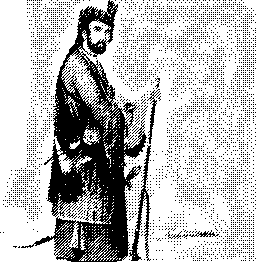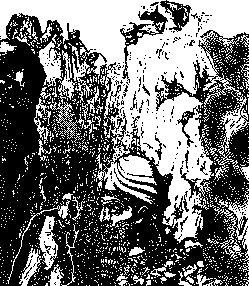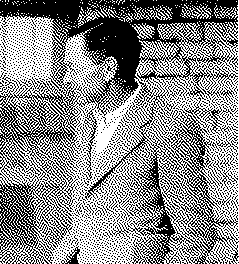

Mesopotamia (Greek: ³The Land Between the Rivers²) lies between the Tigris and Euphrates rivers in what is now Iraq. We know today that it was the cradle of the world¹s earliest literate civilization, that of the Sumerians.
A century and a half ago, it was a remote, desolate land, far off the beaten track in the heart of the Islamic world. Few Europeans ever visited the banks of the great rivers, or the ancient Biblical cities of Nineveh and Babylon, said to lie on their banks.
As in Egypt, it was Napoleon that changed everything.

Afraid that his armies would march overland to India, the British set up a consulate in Baghdad. Generations of consuls at this remote post spent their spare time studying oriental languages and searching for ancient Babylon. They found little but arid mounds and thousands of inscribed clay bricks.
In 1840, the French Government, anxious to emulate the brilliant scholarship of Napoleon¹s Egyptian scientists, appointed Emile Botta their Consul at Mosul, a small town on the Tigris far upstream of Baghdad.

Mosul was of no political importance whatsoever. It just happened to lie opposite the ruins of what everyone thought was the Biblical city of Nineveh, destroyed by Assyrians descending on the plains like "wolves on the fold."
Botta had no luck digging into Nineveh, for he dug in the wrong place. But he made sensational discoveries at nearby Khorsabad, unearthing an Assyrian palace with vivid wall sculptures.
Botta was no archaeologist, but another traveler to Mesopotamia became one.

Englishman Austen Henry Layard set out to ride with a friend from Europe to India in 1839. He arrived at Mosul in 1842 and became fascinated with the mysterious mounds on the banks of the Tigris. He returned to Mosul in 1854 and started digging not at Nineveh, but at another series of mounds 17 miles downstream. We know today that this was Nimrud, the Biblical city known as Caleh.
Layard found three Assyrian palaces in a month, all of them adorned with brilliant and exotic wall sculptures.

Austen Henry Layard supervises excavations at Nimrud: removing a human-headed lion from a palace gateway.
With precious little money, having to improvise every inch of the way, at times supervising as many as 600 men, Austen Henry Layard uncovered a hitherto virtually unknown civilization almost singlehanded. He excavated at Nimrud first, then moved upstream to the ancient city opposite Mosul. Unlike Botta, he dug in the right place, and found the royal palace of King Ashur-bani-pal in 1850. Layard shoveled these priceless archives into baskets and shipped them home. It was to be a quarter century before they were sorted and deciphered.
If ever you visit London, make a point of going to the Assyrian galleries of the British Museum. There you can see the vivid friezes of sieges and wars, of lion hunts and royal processions that adorned Assyrian royal palaces. They give an unrivalled picture of this little known Biblical civilization.

In the meantime, we are lucky that Layard was a vivid, compelling writer. The Anthology contains descriptions of his excavations and the Assyrians in his own hand that make the past live for you. Read, react, and enjoy...
Mesopotamian archaeology came of age in the 1870s, with the discovery of Sumerian civilization between the Tigris and Euphrates, a civilization at least 5,000 years old. The Sumerians were unearthed just as London researchers deciphered one of Ashur-bani-pal¹s clay tablets. This described a great flood almost identical to that in Genesis. The revelation caused an international sensation. Seventeen lines of the story were missing, so epigrapher George Smith was sent out to search for them, and found the missing fragments in 5 days!
The so-called Deluge Tablet described how a prophet named Hasisadra escaped destruction in the great flood by building a large ship. He loaded his family, "the beast of the field, the animal of the field...all of them I caused to go up." The flood destroyed "all life from the face of the earth. " The ship grounded on a mountain top and Hasisadra "sent forth a dove and it left. The dove went and turned, and a resting place it did not find, and it returned."
Eventually, Hasisadra released a raven, which did not return. He let go the animals, became a god, and lived happily ever after.

Perhaps the most famous early excavations in Mesopotamia were those of Englishman Leonard Woolley at Biblical Ur-of-the-Chaldees in the 1920s and 1930s, discoveries as sensational in their own way as Tutankhamun¹s tomb.
His description of the famous "Royal Cemetery" at Ur, which dates to about 3200 BC, is a classic of early archaeology.